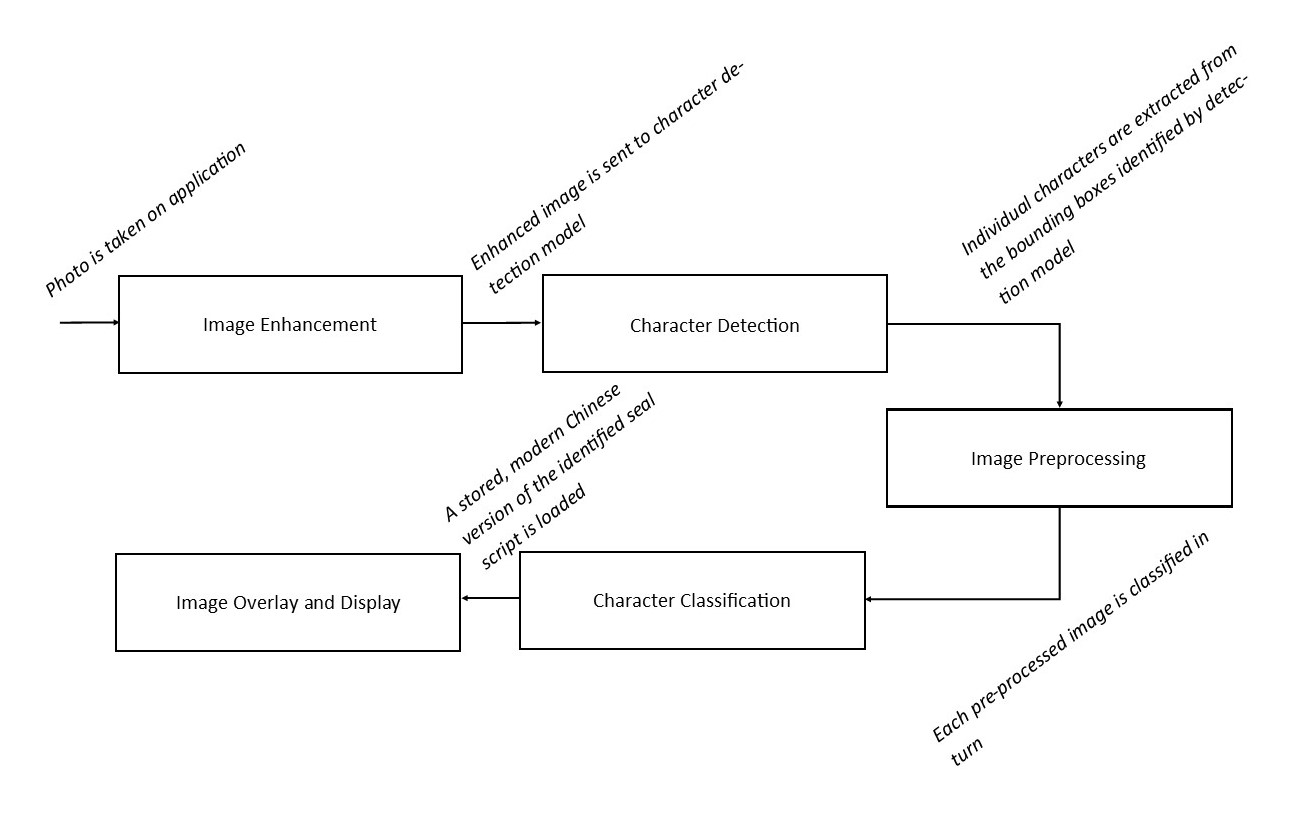The character classification model handles translation of the images of individual seal script characters into modern Chinese.
The current version of the model uses MobileNetV3-Large1. All models are implemented with PyTorch.
All scripts and data used for training the classification model are kept under /data.
The current list of characters used in the dataset can be found at /data/classical_chars.csv and uses the first 1000 characters taken from the list of most frequently used classical Chinese characters2. The format of the CSV is class label, character.
The main function of /data/scrape_seals.ipynb can be run to automatically scrape images of seal script characters. The function currently reads a spreadsheet file downloaded from2 and then formats the desired list of characters to a CSV, then sets up the folder structure for storing the scraped images and then searches through two sources to find any available images. As web-scraping is quite a specific task, this function may need to be altered to fit the format of your input character list. Alternatively, you can create your own dataset CSV in the format specified above, and then comment out the first four commands in the main function.
The dataDir variable must be set, which is the location to store any scraped images. Images for a class will be stored in a directory under dataDir whose name will correspond to the class label. For example, if you have class labels 1,2,3,...,1000, dataDir will have 1000 sub-directories named 1,2,3,...,1000.
It may not be possible to scrape images for all of the characters in the dataset CSV, so some may have to be drawn by hand or found through manual searching. The checkMissingFolders() function in the /data/check_data_integrity.ipynb file can be used to find folders without any images.
The size of the dataset can be enlarged through creating distorted versions of the scraped images. To do this, use the createCsv() function in the /data/create_dataset_csv.ipynb file, first setting DATA_DIR to the dataDir location. This will create a CSV in format image path, class label. The current version of this CSV is given as rawImages.csv in /examples. Next, edit the variables in the distort_image_batch.py file and run it. This will create a desired number of images for each character and constitutes the final dataset.
Now that a dataset has been created, you can start training a model. Training uses a CSV to find images and get their class label, so use the createCsv() function in the /data/create_dataset_csv.ipynb file again, changing the DATA_DIR to the root directory of the dataset.
The current dataset CSV is given as trainData.csv in /examples and contains 100 images for each class.
To train a new model, it must be added to the model_types list of the Config class in /data/config.py. Select the model you wish to train with MODEL_NAME and change the other variables (incl. model parameters, checkpoint save locations etc.) as desired. Then, in /data/train.py, set the dataset transformation of the new model in the init_dataset() function and add the model to the init_model() function in the same style as the three existing models. Run the main() function to begin training.
The process of converting a PyTorch model to NCNN format for application implementation is as follows:
PyTorch .pt file --> .onnx file --> NCNN .bin + .param files
Converting from .pt to .onnx is done by running the /data/convert.py file. Don't forget to set the conversion variables (CONVERT_CHECKPOINT_PATH, BUILD_PATH and ONNX_MODEL_NAME) in `/data/config.py'.
For converting .onnx to NCNN files, we use an external tool https://convertmodel.com/. Both the .bin and .param files are necessary for implementation into the application.
Footnotes
-
Andrew Howard et al. ‘Searching for MobileNetV3’. In: CoRRabs/1905.02244 (2019). arXiv: 1905.02244. URL: http:https://arxiv.org/abs/1905.02244. ↩
-
Jun Da. Character frequency lists 汉字单字频率列表. https://lingua.mtsu.edu/chinese-computing/statistics/. Accessed 15th April 2024, Page last updated 最近更新: 2005-12-21 ↩ ↩2
